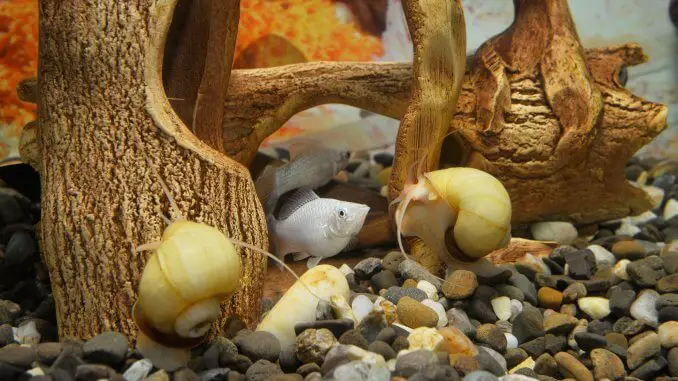
Famous for being slow, you might not think that snails are a particularly interesting group of animals. We are going to try and challenge this view by looking at one of their most unique behaviors: sleep.
We don’t tend to think about other animals sleeping. Many sleep at the same time as humans, so you don’t get a chance to see it, but snails have a more complex process.
They are becoming very popular for home aquariums. Not only do they offer a different look to fish, but snails are one of the best algae eaters around. With more people getting snails, more people are wondering why they spend so much time sitting still.
We are going to talk you through how, why, and when snails sleep, even covering their hibernation habits. Some of the answers will surprise you!
TABLE OF CONTENTS
Snail Sleep Overview
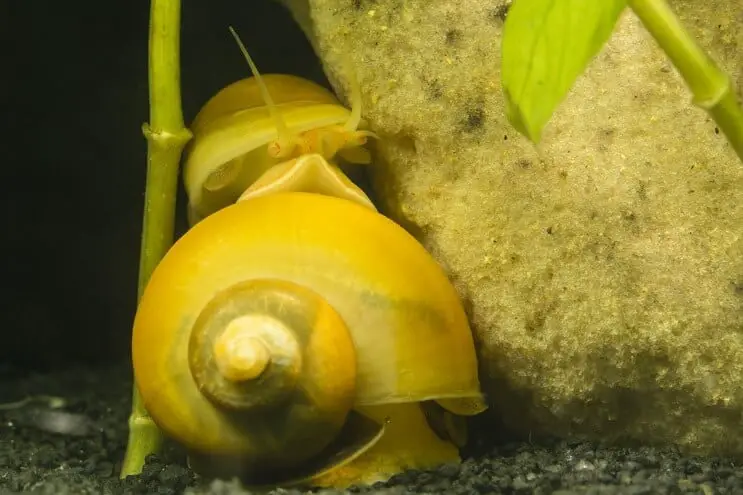
Sleep is a big part of our lives. It can vary dramatically between animals, and snails in particular have a unique system. They are famous for being one of the slowest creatures in the animal kingdom, even when they are active they sit still most of the time.
If you keep freshwater snails at home, you might have noticed prolonged periods of inactivity. Some people assume the worst, thinking that their pets are dead, but they are likely just asleep.
The way they sleep isn’t as simple as sleeping at night and being active in the day (which most of us do). It’s also different to how fish sleep – most fish are diurnal, like humans.
Sleeping comes with a big risk because while we’re unconscious, we’re completely vulnerable. This is more of a problem for wild animals that have to worry about nearby predators.
Fish can regulate their sleep and stay alert, so they can react quickly if a predator is nearby. This isn’t an option for snails because they move so slowly. Instead, they have a shell which offers a form of protection until they wake.
As less complex organisms than us, snails are less dependent on sleep. This means that their patterns and habits are much different.
How Do Snails Sleep?

They can sleep pretty much anywhere. A sticky mucus lets them climb over all surfaces in the tank. This mucus is used to hold them in place while they sleep. So snails can sleep in any position – sideways or even upside down.
They carry their home on their back for protection, so they can stop to sleep wherever they happen to be (decorations, tank walls, leaves, or the substrate). Their bed is wherever they want it.
In a well established tank, some individuals begin to show a personality, picking a favorite spot to settle for sleep and returning regularly. Once settled, they relax their foot and tentacles which withdraw slightly. The shell hangs away from the body.
Much of their sleep takes place in the daytime. They are more active at night to avoid the intensity of sunlight.
A sleeping snail can often look like a dead snail, so don’t be too quick to start mourning.
One of the main things that worry owners is seeing their snails float on the surface of the water. Sometimes air can get into a live snail’s shell; this makes it buoyant and rise through the water. Some marine species purposefully use bubbles to float and wait for prey.
To check if a snail is alive, carefully remove it from the water. Signs of death include an empty shell, a foul smell, lack of response to touch, and an open trapdoor on the snail’s body.
How Long Do Snails Sleep?
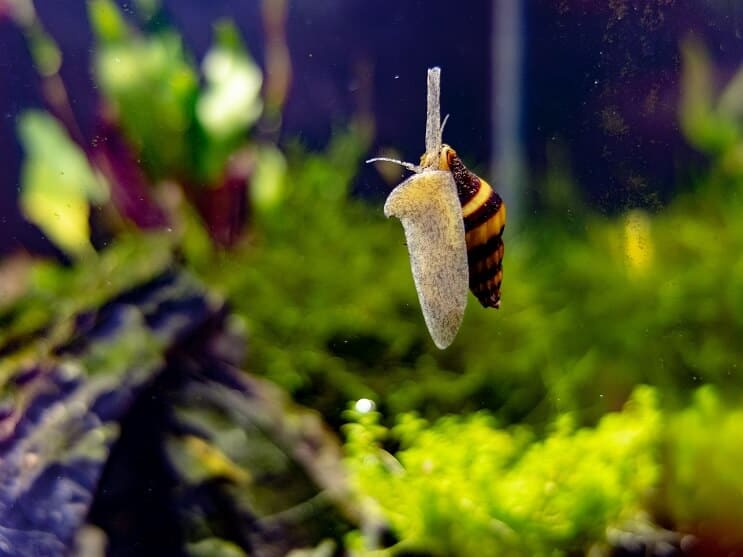
Snails sleep very differently from other inhabitants of the water. Most fish are diurnal, meaning that they’re active in the day and asleep at night, but snails don’t have a daily schedule.
Instead of a 24-hour sleeping cycle, a snail’s sleep cycle lasts for 2-3 days.
Research has shown that over 13 hours, snails sleep in seven small bouts. After this, there is a 30 hour period where they are active.
If a snail loses sleep for one reason or another, they seem to be able to carry on as normal until their next set of seven bouts.
Snails can sleep for a very long time, via hibernation. It’s reported that this could last for up to 3 years! Few species actually hibernate for this long though, and it’s very unlikely to be seen at home.
Do Snails Hibernate?
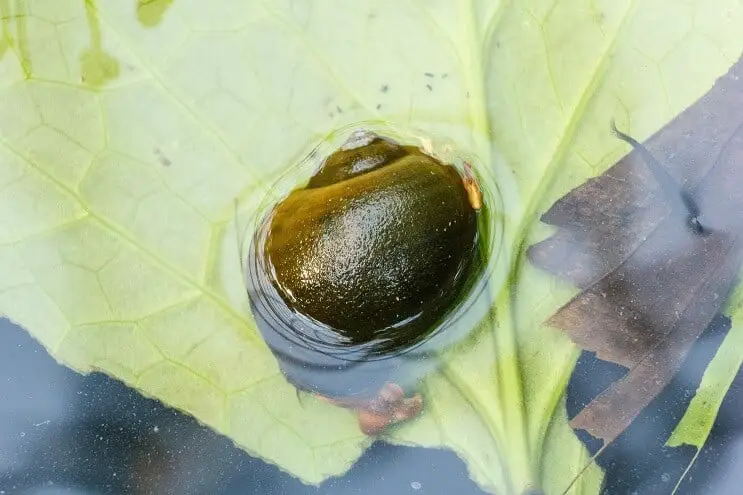
Hibernation is common in mammals, especially rodents. It is a process that is usually used to help survive the winter, when temperatures are low, and food is scarce.
It works by reducing metabolic activity to save energy since food is in short supply. The body temperature is lowered, breathing is slowed, and heart rate decreases. In the wild, freshwater snails hibernate this way, entering a deep sleep during winter until water temperatures rise again in the spring.
You are less likely to see snails hibernate in your aquarium because temperatures generally remain constant. You can trigger their natural hibernation behaviors by lowering your tank’s temperature through winter, but this isn’t necessary.
If you think they are hibernating, add less food into the tank since they will need less energy. Monitor the food. If it disappears quickly, add more, if it ends up sitting on the bottom of the aquarium, give less.
Some animals enter a state called “aestivation”. This is effectively the same as hibernation but during summertime. Metabolic rates are lowered so the animal can hide away from the dangers of high temperatures, which could dry a snail out.
Aestivation is common in land snails but not aquatic ones (since water can help to buffer high summer temperatures).
Other Fun Facts About Freshwater Snails
- Not only do snails sleep differently, but they also mate differently to fish. Most snails are hermaphrodites, meaning that they have both male and female sexual organs. They still need to pair up for mating though, so that their eggs can be fertilized.
- To move, snails use a “foot”. This is a muscular organ that is constantly expanding and contracting. The foot has a special gland that excretes mucus. The mucus acts as a lubricant and glue, allowing the snail to move across a surface while also sticking to the surface.
- The way that snails breathe can differ between species. Some, like nerite snails, use gills to extract oxygen from the water.
- To eat, snails have thousands of teeth that together form the radula. A single radula could have 120 rows, each of 100 teeth. This is an effective cutting/scraping tool when feeding.
- The southeastern United States hosts the highest number of species, but they’re found across the globe. Another hotspot is Lake Tanganyika, in Africa.
- They don’t have ears, but they have good eyesight to make up for their lack of hearing.
- The largest freshwater species is the apple snail (Pomacea maculata), reaching 6 inches. This is nothing compared to the African giant land snail (Achatina achatina), which is a massive 15.5 inches when fully extended.
- There are approximately 5,000 freshwater snail species living in lakes, ponds, and rivers across the world. All of these are gastropod molluscs, and most fall into the subclass Pulmonata.
FAQs About Snail Sleep
Do Snails Sleep At Night?
A snail’s sleep cycle isn’t diurnal – this means that they don’t just sleep at nighttime. Instead, they sleep over a 13 hour period in seven bouts, which can span day and night.
Can Snails Sleep Upside Down?
Yes. Snails can sleep sideways or upside down, pretty much anywhere they can get a firm grip. They may come unstuck if disturbed though.
How Long Do Snails Sleep For?
Usually sleeps are short (seven separate periods of sleep within 13 hours) but can be much longer during hibernation. To protect themselves from the cold and preserve energy, a snail could hibernate for up to 3 years.
This length of time is species-dependent though, common aquarium species don’t hibernate for anywhere near this long.
Summary
People don’t tend to think about the complexity of animals. As we watch them we take for granted simple things like how they sleep. When we stop to think and ask questions (like can fish drown?), the answers are both interesting and surprising.
Now that snails are a common sight in home aquariums, more and more people are realizing how interesting they are. The way that they sleep is completely different to both the fish you keep them with and us as humans.
Their sleep cycle is particularly strange. This cycle is completely switched up in the winter when hibernation is necessary to avoid the low temperatures and lack of food.
If you keep snails at home then you will probably have seen these strange sleeping habits.
Even though you now know how snails sleep, there is still plenty more to learn about these unique creatures.
Do your snails have any interesting sleeping habits? Let us know what you have seen in the comments below…

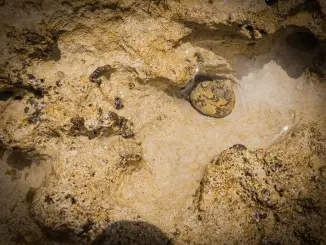
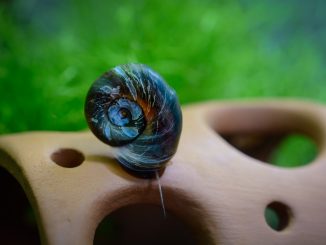
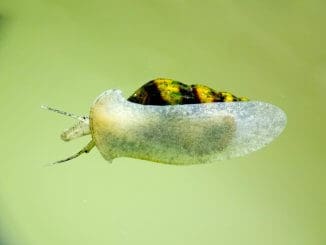
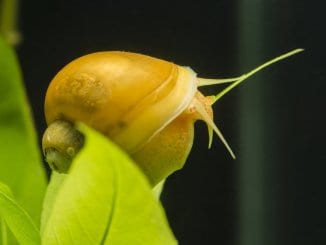
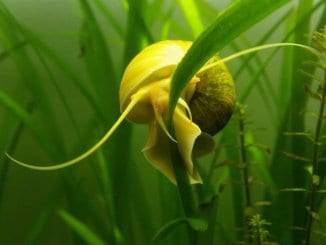

Hello Robert,
I just wanted to let you know it was me Elizabeth wwho wrote about the 2 goldfish.
I am reading the helpful informatin about all fish, there food etc
I see they can eat quite a variety of food, my fish are comet gold fish
I was interested in shrimp for them as well as fish flakes are
there shrimp flakes as Well as the pellet form ?
Kind Regards,
Elizabeth
Hi Elizabeth, yes you can buy shrimp flakes, they’re available in most stores or online. Thanks, Robert
Hi, I have a mystery snail that has been sleeping for 6 days now. I know he is alive because I poked him today and he pulled up tighter into his shell. Should I be concerned? Thank you.
Hi Terry, it is unusual if he hasn’t moved at all in 6 days. A few things to consider: are the water parameters OK? Does his shell look OK? Is he eating? Thanks, Robert
This is in regards to “Snails Sleeping” – I am new to having an aquarium (1 month), and I have a small aquarium with 3 male guppies, 1 emerald green Cory cat, and a super cool Yellow Rabbit Snail (his shell is conical, like a unicorns horn, and his face is yellow and long, and wrinkly like an elephants trunk, with drooping antennae that look like a rabbits ears). All of these cuties went into my cycled tank on Friday and they all appear happy and are always SUPER hungry. They all get along well, which is a plus, and my guppies are all very interested in the snails antics as he moves about the smooth gravel and climbs the tank walls (my Cory sits on his shell sometimes lol). Late Sunday or early Monday I noticed the snail park himself on the gravel near the heating element and pull slightly into his shell to rest. He did this for an hour or two, and was off and “running” again. Today (Wednesday), when I got up and checked the tank at 6:30am, he was back in the same resting spot, laying on his side on the gravel, tucked inside his shell (not tightly) by the heater. I left and got back home 2 hours later and he was still in the same spot, but had moved his body inside his shell differently (observed occasionally throughout the day and even found him tightly pulled into the shell, would occasionally “twitch” or gently stretch). He remained in that position until 6:00 tonight (shortly after turning the tank light off), and popped out of his shell and started cruising the walls and the gravel again. Heck of a sleep! I’m in love with Turbo, my Yellow Rabbit Snail…such a fascinating creature to watch and a wonderful addition to my tank…did I mention he is great at cleanup?
I am fairly new to the hobby- started with snails, added more snails, and finally some shrimp. It began with a tank that was supposed to grow microgreens on top with a betta below but I hadn’t gotten around to doing much with it. It was starting to have algae so I bought a couple of mystery snails and found them to be quite fascinating! I added a few horned nerites and I have learned they like to sleep for an extended period of time. I noticed one appeared to have died so I removed it from the tank. Not being sure it was actually dead, I put it in a small container. It didn’t smell so I didn’t toss it. Three days later I awoke to find it suctioned to the wall! I’m so glad I didn’t toss him. I love to watch them do their thing. I’m gathering supplies for a 20 long now. Yay!
Hello ummm… can you tell me whats wrong with my snail. he hasten moved in 2 days and I’m worrying we tried putting him next to the glass but it didin’t move and I’m scared it might be dead.
thank you for this informative article! i’ve noticed my mystery snails like to hide and sleep in a ceramic log during the day :)
I am new to being the owner of a mystery snail I don’t know the gender but im assuming its a he. I named him Michelangelo Leonardo. he has been sitting at the bottom of my tank for two days. he doesn’t smell, but when I picked him up, he didn’t move. I got him Wednesday afternoon of last week. he’s been very active before two days ago. I woke up one morning to feed my fish, and he was just sitting on the ground, my dad said that snails were nocturnal and to wait until morning. the next day, he still hadn’t moved. I was busy that day, so I waited ’till today to scoop him up in my fish net. he didn’t stink or move, but im worried that, since he’s a large snail and from what i’ve read they only live a year, that he’s either dead or dying. I also fed him half an algae pellet that the gal at petco told me to feed him every other day. I fed him the day after I got him and he still hasn’t touched it. my neon tetras, Shimmer, Glow, and Glitter, have been nibbling on it as well as their normal diet of tropical fish flakes. my tank has been running for only two weeks so its a pretty clean five gallon. Michelangelo lives with my three neon tetras and my blue and black rose petal beta, Merlin. I have a Whisper 10i filter and a heater which is set at about 77 degrees fernheight ( it won’t let me change it). Michelangelo seemed very happy until he stopped moving, do you have any advice for a first timer aquariumist and a teen with no clue how to care for a mystery snail ( or any other fish) if it matters my mystery snail has a white shell.
thank you for you advice!
My two snails haven’t moved in over a week. They are both still in their shell. For a few days they were floating and now they finally came back down but havent moved from the spot. The black snail is a little harder to judge but my golden snail I can literally see. Is this good ?